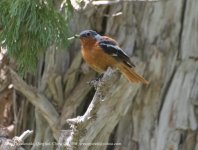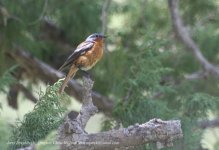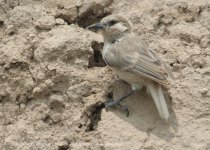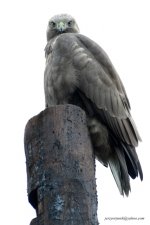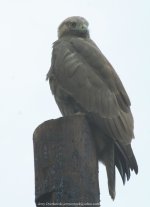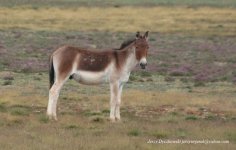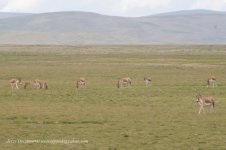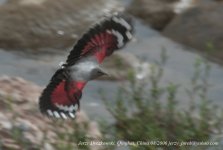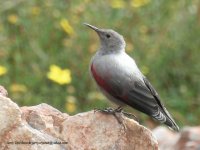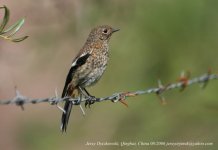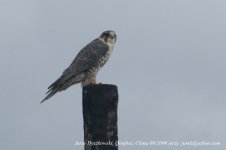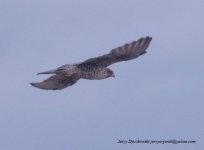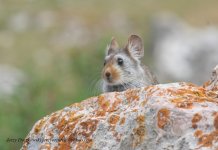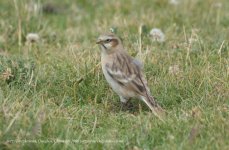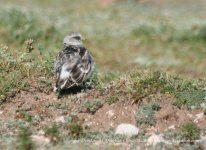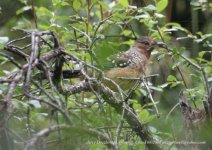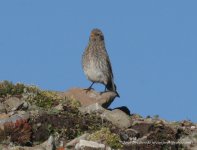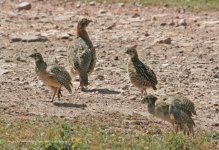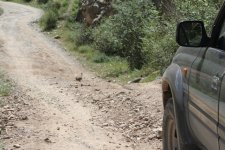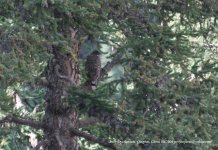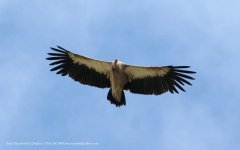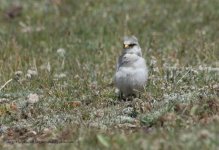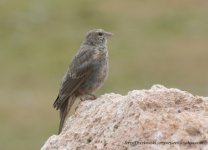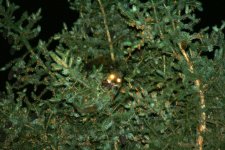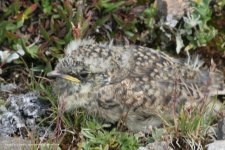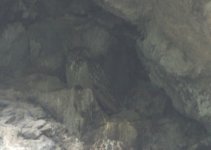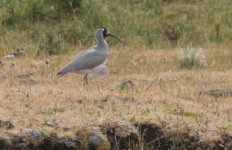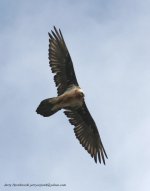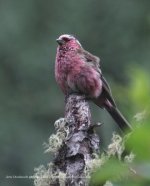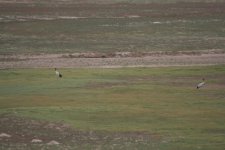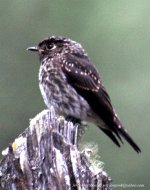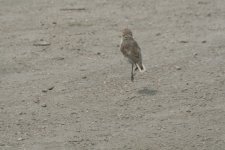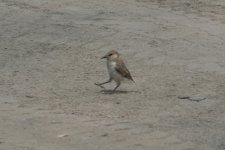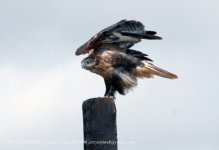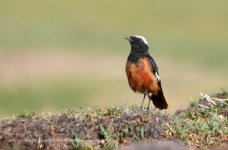seeing as Jurek is away at present i'll post the OBC webgroup posting of the trip list from Jesper...
The trip is a fundraiser and several hundred pounds are contributed by the participants and Jesper runs the trip at a special price
The OBC fundraising trip to NE Tibet ended on 27 August. It brought
together enthusiastic birders representing three countries living on as many
continents.
Including a few picked up before breakfast on the last morning in Beijing
we recorded a total of 203 species, a very respectable total given that we
only spent two days and a half birding below 3,000m. It was in fact a trip
of so many highlights that group members would have been hard pressed to
name favourite birds at the end of the trip. The scenery, the mammals (incl.
a couple of wolves, 250+ Blue Sheep, herds of Kiang (= Tibetan Wild Ass),
four Goitred Gazelle, and several cute Stoliczka’s Mountain Voles), abundant
wildflowers of bewildering beauty and diversity, and an intriguing mix of
local cultures combined with the avian wonders to produce a trip the
memories of which will burn brightly for a long, long time.
Encounters which for me were particularly memorable were:
Szechenyi’s Monal Partridge Tetraophasis szechenyi
7+ bird-days. On 19th we spent time trying to see three vocal groups of
this at times uncooperative species before flushing three birds – “nice
tail-band!”, and that, we thought, was that: not ideal, but better, a lot
better, than no views at all… THEN one bird was relocated up in the tree we’
d concluded it had flown through, and with a bit of care the scope was
placed so that we could all enjoy extended, unobscured views,
feather-by-feather.
Tibetan Snowcock Tetraogallus tibetanus
10+ bird-days. Noted on two dates. On 14th repeated calls helped us
localize one bird fairly easily but somehow it evaporated from the ‘scope
field-of-view and it then took us an agonizingly long time, and several
moves, before everyone had finally seen one properly.
White Eared Pheasant Crossoptilon crossoptilon
36+ bird-days. Noted on four dates. 16+ (= two groups of four adults w/ 3+
& 5+ chicks, respectively, in close proximity) on 17th was exactly what we’d
hoped for, and their timely appearance allowed us to change the day’s
‘battle plan’ slightly, which in turn produced a group of Blood Pheasants.
Later, rounding off our visit to the Mekong watershed nicely, up to 18
adults were seen repeatedly in the course of the morning of 22nd.
Pallas’s Fish Eagle Haliaeetus leucoryphus
A superb adult perched on a fence post S of Maduo on 24th. Tingaling!
Lammergeier Gypaetus barbatus
26 bird-days. Noted on 11 dates. A top Dreambird for several group
members, this emblematic species was not devalued by several superb
encounters… one landed on the ground <100m from our vehicle on 21st.
Black-necked Crane Grus nigricollis
31 bird-days. Noted on four dates. Superb views on several occasions, but
to our dismay just one juvenile was seen (near of Maduo on 24th).
Pallas’s Sandgrouse Syrrhaptes paradoxus
A superb encounter with a pair W of Koko Nor – ‘scoped at c80m. Such
camouflage! Such charisma!
Eurasian Eagle-Owl Bubo bubo
One frame-filler under a rock overhang near the Yangtze on 15th. Another
long-wished-for life bird for several group members – tingaling!
Tibetan Grey Shrike Lanius (sphenocercus) giganteus
One put on a good show near Nangqian on 22nd. A low-density species,
wide-ranging and often inconspicuous even when present (and thus easily
missed), we were fortunate to see this individual so well and enjoyed it all
the more for having drawn blanks at two other sites.
Crested Tit-Warbler Leptopoecile elegans
20 bird-days. Noted on four dates. Two males at Nangqian forest reserve
sat out at <10m trying to figure us out, allowing team photographers to
‘shoot’ away. T’is not often one gets a chance to check the iris colour of
this species! – I leafed through the dictionary and two Birdquest brochures
in search of a superlative which fully does this jewel justice, in vain…
Wallcreeper Tichodroma muraria
Eight bird-days. Noted on four dates. Prolonged views of one at <10m next
to the vehicles at the Ibisbill spot on 23rd was a trip highlight… flying
below us in perfect sunlight, then feeding on lichen-blotched boulders in
the stream, popping in and out of view.
Przevalski’s Redstart Phoenicurus alaschanicus
12 birds (= three family parties) in mountains W of Koko Nor – we’d barely
caught our breath before the 1st superb male appeared, and throughout a
memorable morning we were treated to close-up encounters with this
sought-after, very pretty species.
Sooty Flycatcher Muscicapa sibirica rothschildi & M. s. sibirica
19 bird-days. 1-10 noted daily at Nangqian forest reserve, where obliging
members of family parties time and again lured the team photographers away
from the group… At Beijing, a juvenile ssp sibirica sat out nicely on a dead
branch.
***Work on vocalizations may well lead to suggestions that the distinctive
rothschildi be elevated to full species status…
Henri’s Snowfinch Montifringilla henrici
c391 bird-days. Except for two on 24th seen only at Er La, where 355 on
25th was a surprise – of these, 298 flew S (14 flocks / groups of 2-41
birds, all but three birds passed before 08h00) on what appeared to be
straightforward migration. As we were not ideally positioned the whole time
it is likely that we missed a number of flocks: as many as twice the number
we recorded may have passed.
Maroon-backed Accentor Prunella immaculata
20 bird-days. Noted daily at Nangqian forest reserve with a daily max of
16. Often a tough bird to see well, but this year we were astonished to find
a post-breeding gathering of more than a dozen associating with good numbers
of other passerines (including a furtive Crimson-browed Finch) near a rare
trickle of water.
Three-banded Rosefinch Carpodacus trifasciatus
12 bird-days. 2-5 daily at Nangqian forest reserve. A retiring species,
but we found it well worth the trouble to track down calling birds…
Other good birds seen include Saker Falco cherrug, Severtzov's Grouse
Bonasia sewerzowi, Przevalski's Partridge Alectoris magna,Tibetan Partridge
Perdix hodgsoniae, Blood Pheasant Ithaginis cruentus, Ibisbill Ibidorhyncha
struthersii (looking so much more at home in Tibet than on the last couple
of acceptable stretches of river near Beijing!), Mongolian Plover Charadrius
mongolus, Pintail Snipe Gallinago stenura, Great Black-headed Gull Larus
ichthyaetus,Three-toed Woodpecker Picoides tridactylus, Long-billed Calandra
& Mongolian Lark Melanocorypha maxima & M. mongolica, Pale Sand Martin
Riparia diluta, Blyth's Pipit Anthus godlewskii, Chestnut & Kessler’s
Thrushes Turdus rubrocanus & T. kessleri, Himalayan Red-flanked Blutail
Tarsiger rufilatus, Guldenstadt’s Redstart Phoenicurus erythrogastrus,
Gansu Leaf Warbler Phylloscopus kansuensis (as well as eight other
Phylloscopus warblers) ‘Margelanic’ Lesser Whitethroat Sylvia (minula)
margelanica, Stoliczka's Tit-warbler Leptopoecile sophiae, Spot-breasted
Scimitar Babbler Pomatorhinus erythrocnemis, Kozlov's Babax Babax koslowi,
Giant Laughingthrush Garrulax maximus, Chinese Fulvetta Alcippe
striaticollis, White-browed Tit Parus superciliosus, Chinese & Przevalski’s
Nuthatches Sitta villosa & S. przwalskii, Isabelline Shrike Lanius
isabellinus, Tibetan Magpie Pica bottanensis, Henderson's Ground Jay
Podoces hendersoni, Hume’s Groundpecker Pseudopodoces humilis, five
additional species of Snowfinch, Plain & Brandt’s Mountain Finches
Leucosticte nemoricola & L. brandti, Desert Finch Rhodospiza obsolete,
Sinai Carpodacus synoicus & Roborovski’s Rosefinches Kozlowia roborowskii,
Crimson-browed Finch Pinicola subhimachalus, Grey-headed Bullfinch Pyrrhula
erythaca, White-winged Grosbeak Mycerobas carniceps, and Pine Bunting
Emberiza leucocephalos.

 or something like that, I'm still tired). Also Wolves, Kiang, Blue Sheep and cute Giant Flying Squirrels
or something like that, I'm still tired). Also Wolves, Kiang, Blue Sheep and cute Giant Flying Squirrels 




